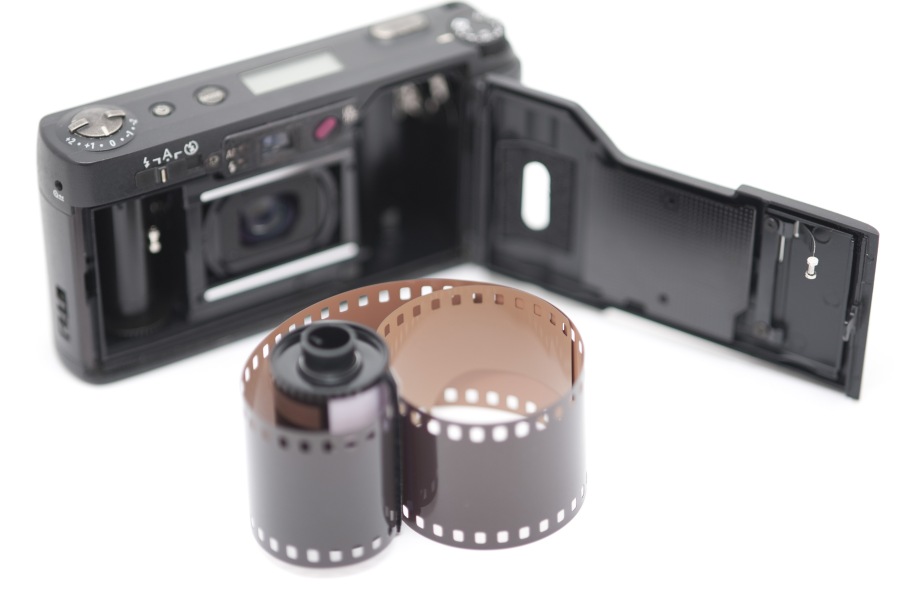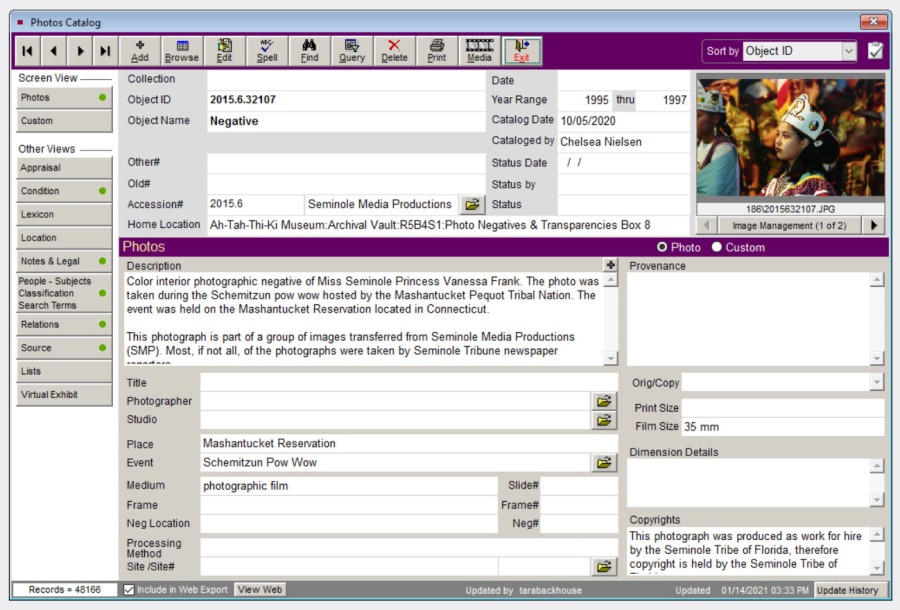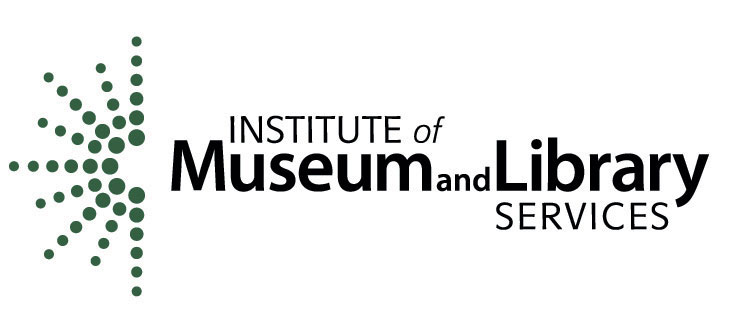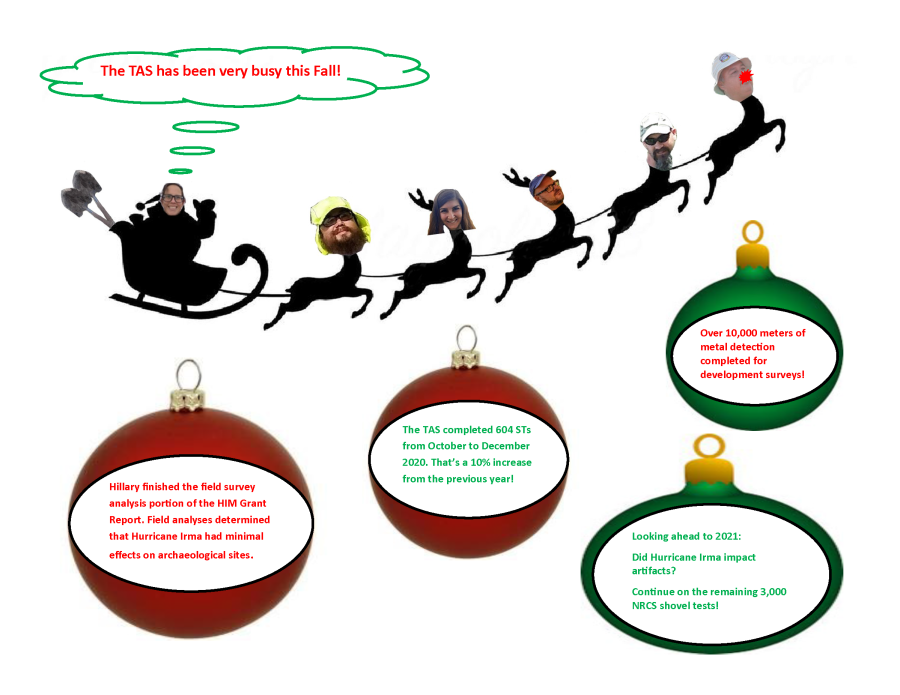By Wyatt Halbach
The Tribal Archaeology Section (TAS) spends a large portion of our time conducting fieldwork. This means that we are out in the pastures, roadways, and other natural environments of the many reservations that are a part of the Seminole Tribe of Florida. Over the course of TAS’ history, our staff have had many exciting experiences in the field and a couple fun discoveries. This blog post is going to be all about our current TAS employees and some of the things that they have discovered and experienced while working for the STOF.
The first few things we’ll talk about are the incredible artifacts that employees have found while working on the reservation. Shawn Keyte, Jack Chalfant, and Hillary Bedrosian all recall finding certain artifacts as their most memorable moment working for the STOF. One of the most incredible things that Shawn has found is a columella pendant. A columella is the twisted center piece of a snail shell. These types of shell have been used in the past and the present as beautiful pieces of jewelry. When Shawn uncovered this artifact as part of a large project in 2016, he originally had no idea what it was. However, the small holes in the artifact are telltale signs of human modification. Jack Chalfant, a tribal member and an employee for almost 10 years, has discovered many exciting things while working in the field. Foremost in his mind was when he discovered a bone point. Although finding faunal bone is an extremely common occurrence in the field, finding a shaped piece of bone like the one Jack found is rare. Finding any type of tool is always rewarding and helps add more information to the archaeological record! In addition to the bone point that was found by Jack, during her time here, Hillary managed to find a chert flake in one of her digs. This flake is special for Hillary and for the rest of TAS because just like the bone tool that Jack found, stone tools are also a rare find. These artifacts are incredible bits of Seminole history that we will not soon forget about!

Moving on from artifacts, Maureen Mahoney and Mark Savany both have exciting experiences based in expanding the knowledge of sites. For Maureen, her most memorable experience has been looking at old aerial photos that have been taken of the reservation. These photos have been taken every couple years since the 1940s and they help those of us in TAS establish where areas of interest may lie. The thing that excites Maureen the most about these old aerials is seeing the layouts of old camps that do not remain in the present day. These camps are often not visible in the archaeological record, so it is special to be able to talk to tribal members who once lived in these camps to get information. One of the most important parts of our job here in TAS is talking with Tribal members and hearing their stories. Moving from the aerials to the ground, Mark’s most memorable experience has been going to explore sites in person and gathering information that allows us to set the specific boundaries of sites. This can mean shrinking sites, keeping them the estimated size, or expanding them. Getting information about these camps and sites is not only important for the historical record, but also a great way to reach out to the community which makes it an unforgettable experience.

It is important to note that although many of our experiences in the field are centered on work, some can be centered around fun as well! Ben Bilgri and Wyatt Halbach both have exciting experiences from the field like this. One time, while Ben was working in a hammock on the reservation, a friendly pit bull managed to find him. While Ben continued to work, the pit bull cheerfully followed him to several holes, occasionally begging for some belly rubs. On the other hand, Wyatt had an experience with wild animals instead of domesticated. While doing paperwork on a pit that he had dug in a hammock, a litter of piglets came from seemingly out of nowhere and ran past, not two feet away from him. A few minutes after this litter ran past, a second litter also made their way by, following the same route as the first. Both groups met up with each other and wandered off into the interior of the hammock. Fortunately, there were no adult boars around, which would have been a cause for concern. Being out in nature for work provides plenty of experiences with the wildlife and domesticated animals. Although rare, some of these encounters can make an employee’s whole day or even week. Even though close personal interactions with animals is rare, it is always special to be surrounded by the beautiful goings-on of nature within the STOF reservations.
Over the years, the employees of TAS have all had some significant discoveries and experiences while doing work for the STOF. These things will not only give the employees something to remember for the rest of their lives, but it also gives us experiences to share with the community. Through this, they can learn more about what we do in the field and we can learn more about the history that we hope to preserve through our archaeological work.















